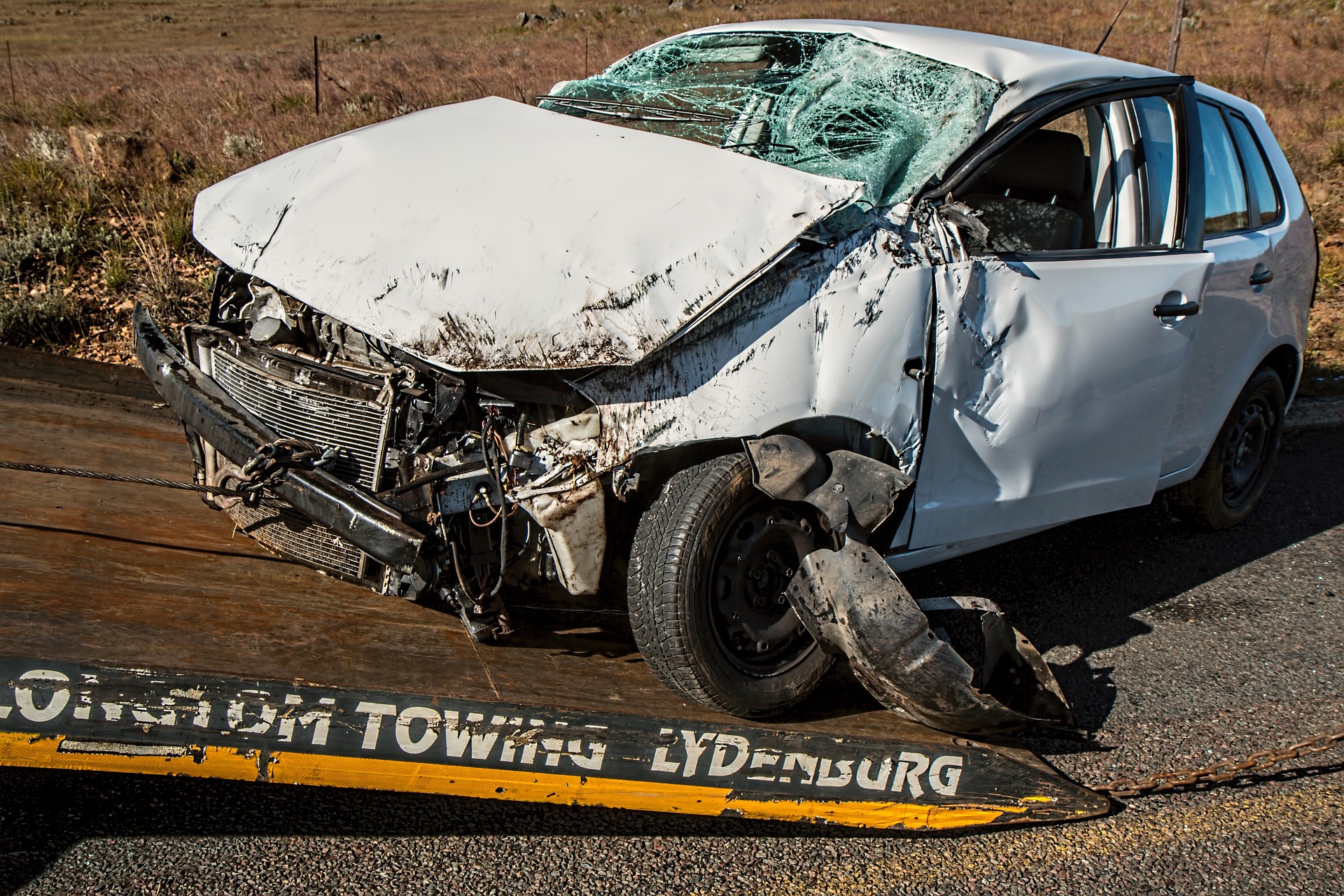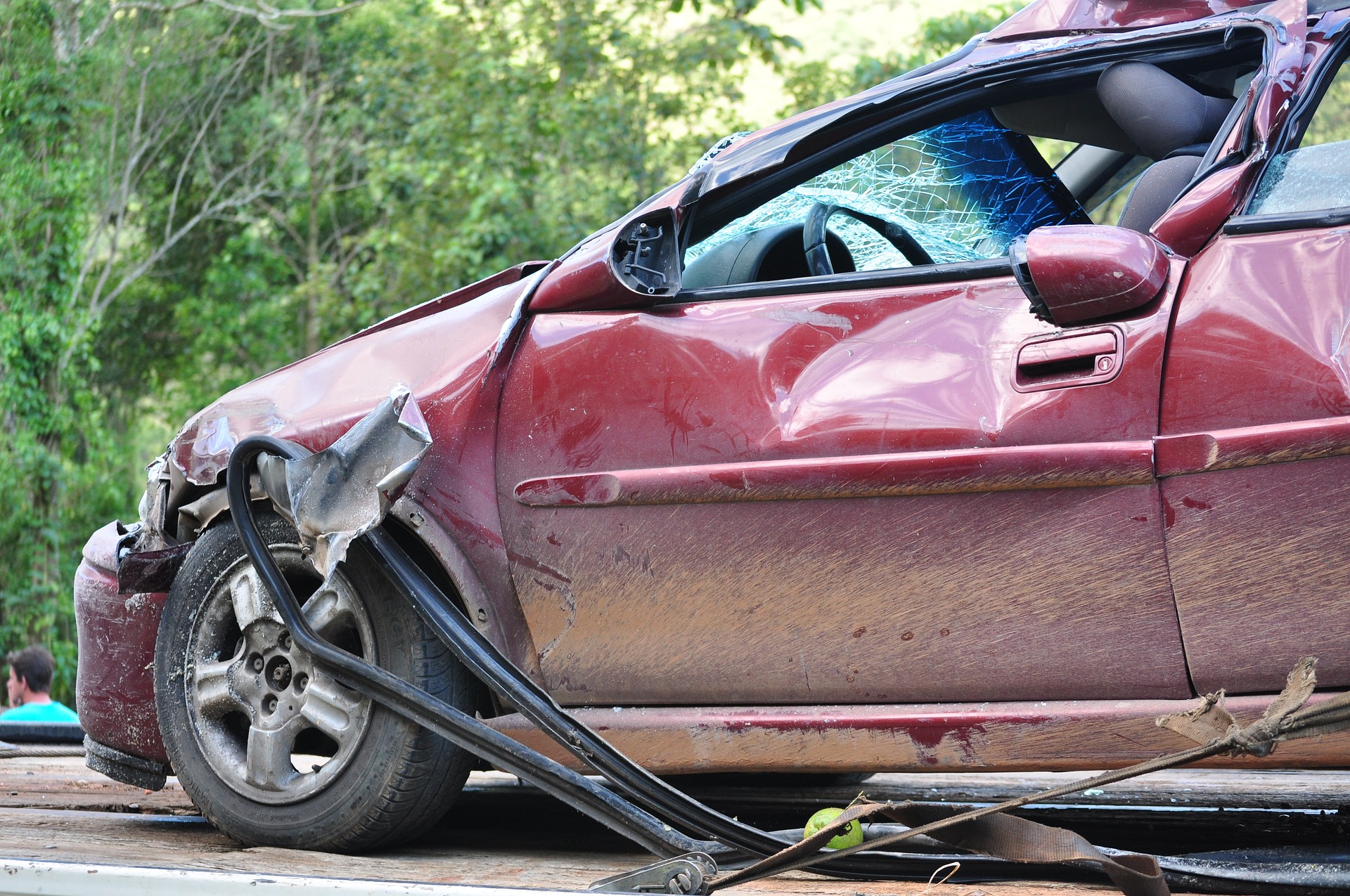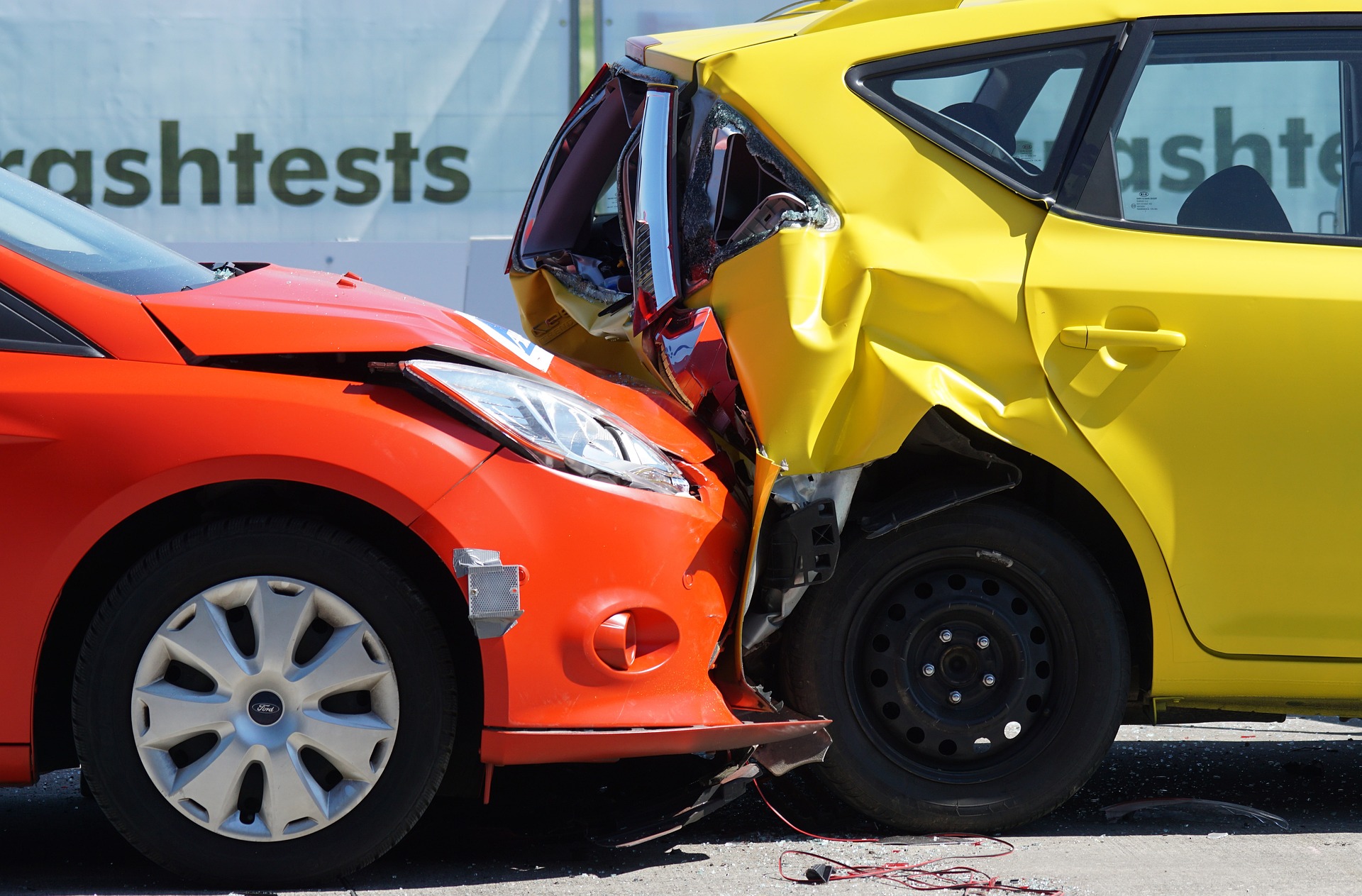If you’ve ever been in a car accident, you know how scary and painful it can be. You may have suffered injuries such as whiplash, bruises, cuts, or broken bones. But did you know that a car accident can also cause a compression fracture in your spine?
A compression fracture is a type of spinal injury that occurs when one or more of the vertebrae (the bones that make up your spine) collapse or crack due to excessive pressure or force. Compression fractures can cause severe back pain, loss of height, difficulty moving, and even nerve damage or paralysis.
In this article, I’ll explain what compression fractures are, how they can happen in a car accident, what symptoms they cause, how they are diagnosed and treated, and how you can prevent them from happening again. I’ll also share some tips on how to deal with the legal and financial aspects of a compression fracture caused by a car accident.
By the end of this article, you’ll have a better understanding of compression fractures and how they can affect your life after a car accident. You’ll also learn how to protect your rights and get the compensation you deserve for your injuries.
What is a Compression Fracture?
A compression fracture is a type of spinal injury that occurs when one or more of the vertebrae (the bones that make up your spine) collapse or crack due to excessive pressure or force. The most common cause of compression fractures is osteoporosis, a condition that weakens the bones and makes them more prone to breaking. However, compression fractures can also happen as a result of trauma, such as a fall, a sports injury, or a car accident.
Compression fractures usually affect the thoracic spine (the middle part of your back), especially the lower thoracic area. They can also occur in the lumbar spine (the lower part of your back), but less frequently. Compression fractures rarely affect the cervical spine (the neck area), unless there is severe trauma involved.
Compression fractures can vary in severity and location. There are three main types of compression fractures:
- Wedge fracture: This is the most common type of compression fracture. It occurs when the front part of the vertebra breaks and collapses, while the back part remains intact. This causes the vertebra to form a wedge shape and tilt forward. This type of fracture can cause kyphosis (a forward curvature of the spine) or hunchback.
- Burst fracture: This is a more severe type of compression fracture. It occurs when both the front and back parts of the vertebra break and collapse1. This causes the vertebra to lose height on both sides and spread outwards. This type of fracture can cause spinal cord injury or nerve damage if bone fragments press on the spinal canal or nerve roots.
- Chance fracture: This is a rare type of compression fracture. It occurs when the vertebra separates into two pieces due to a violent forward flexion injury. This type of injury usually happens in a car accident when the seat belt restrains the lower body but not the upper body2. This type of fracture can cause spinal instability or nerve damage if the vertebra shifts out of alignment.
How Can a Car Accident Cause a Compression Fracture?
A car accident can cause a compression fracture by applying a strong impact or force on your spine. This can happen in several ways:
- Frontal collision: If you hit another vehicle or an object head-on, your body may be thrown forward against the seat belt or airbag. This can cause your spine to bend forward or backward with great force, resulting in a compression fracture.
- Side collision: If you are hit from the side by another vehicle or object, your body may be pushed sideways against the door or window. This can cause your spine to twist or bend sideways, resulting in a compression fracture.
- Rear-end collision: If you are hit from behind by another vehicle or object, your body may be thrown forward and then backward by the seat belt or airbag. This can cause your spine to flex and extend rapidly, resulting in a compression fracture.
- Rollover accident: If your vehicle rolls over during a crash, your body may be tossed around inside the car or ejected from the car. This can cause your spine to experience multiple impacts and forces from different directions, resulting in a compression fracture.
What are the Symptoms of a Compression Fracture?
The symptoms of a compression fracture depend on the severity and location of the injury. Some people may not have any symptoms at all, while others may experience severe pain and disability.
Back pain that worsens with movement is the most typical indication of a compression fracture. The fracture site, which can be anywhere between the shoulders and the lower back, is where pain typically manifests. Other areas of the body, including the chest, abdomen, hips, legs, and feet, could also experience pain. Muscle spasms, stiffness, or inflammation may also be present in addition to the discomfort.
Other symptoms of a compression fracture include:
- Loss of height: As the vertebrae collapse, they cause the spine to shorten and curve forward. This can result in a loss of height of up to 6 inches over time.
- Kyphosis: As the spine curves forward, it creates a hunched-over appearance (also known as dowager’s hump or hunchback). This can affect your posture, balance, breathing, digestion, and appearance.
- Nerve damage: If the compression fracture affects the spinal canal or nerve roots, it can cause nerve damage that leads to numbness, tingling, weakness, or paralysis in different parts of the body. This can affect your mobility, sensation, bladder control, bowel control, sexual function, and quality of life.
- Spinal cord injury: In rare cases, a compression fracture can cause spinal cord injury that results in partial or complete paralysis below the level of the injury2. This can affect your ability to move, feel, breathe, speak, and perform daily activities.
How is a Compression Fracture Diagnosed?
If you suspect that you have a compression fracture after a car accident, you should seek medical attention as soon as possible. A doctor will perform a physical examination and ask you about your symptoms, medical history, and how the injury occurred.
The doctor may also order one or more imaging tests to confirm the diagnosis and assess the extent of the damage. These tests may include:
- X-ray: This test uses radiation to produce images of your bones. It can show if there is any fracture or deformity in your vertebrae.
- MRI scan: This test uses magnetic fields and radio waves to produce detailed images of your soft tissues. It can show if there is any damage to your spinal cord or nerve roots.
- CT scan: This test uses X-rays and computer technology to produce cross-sectional images of your body. It can show if there is any bone fragment or other abnormality in your spinal canal.
- Bone scan: This test uses a radioactive substance that is injected into your bloodstream and travels to your bones. It can show if there is any abnormal activity or inflammation in your vertebrae.
Based on the results of these tests, the doctor will determine the type, location, and severity of your compression fracture and recommend the best treatment option for you.
How is a Compression Fracture Treated?
The treatment for a compression fracture depends on several factors, such as:
- The cause of the fracture (osteoporosis, trauma, or tumor).
- The type of fracture (wedge, burst, or chance).
- The location of the fracture (thoracic or lumbar spine).
- The severity of the fracture (mild, moderate, or severe).
- The presence of any complications (spinal cord injury, nerve damage, or kyphosis).
- Your age, health condition, and preferences.
The main goals of treatment are to:
- Relieve pain and inflammation.
- Restore mobility and function.
- Prevent further bone loss and fractures.
- Correct spinal deformity and instability.
The treatment options for a compression fracture include:
Nonsurgical treatment
Most compression fractures can heal with nonsurgical treatment within 6 to 12 weeks. Nonsurgical treatment may include:
- Pain medications: Your doctor may prescribe over-the-counter or prescription pain relievers to ease your discomfort. You may also use anti-inflammatory drugs (such as ibuprofen) or muscle relaxants (such as cyclobenzaprine) to reduce swelling and spasms.
- Rest: You may need to rest in bed for a few days or weeks until your pain subsides. You should avoid any activities that put stress on your spine, such as lifting, bending, twisting, or driving.
- Bracing: Your doctor may recommend wearing a back brace or corset to support your spine and limit its movement. This can help prevent further collapse of your vertebrae and reduce pain. You should wear the brace as instructed by your doctor and gradually wean off it as your fracture heals.
- Physical therapy: Your doctor may refer you to a physical therapist who can teach you exercises to strengthen your back muscles and improve your posture. Physical therapy can also help you regain your flexibility and range of motion.
- Osteoporosis treatment: If your compression fracture is due to osteoporosis, your doctor may prescribe medications to prevent bone loss or stimulate bone growth. These medications include bisphosphonates (such as alendronate), hormone therapy (such as estrogen), selective estrogen receptor modulators (such as raloxifene), calcitonin, parathyroid hormone, or monoclonal antibodies (such as denosumab)1. You may also need to take calcium and vitamin D supplements to support your bone health.
Surgical treatment
Some compression fractures may require surgery if they are severe, unstable, or cause nerve damage or spinal cord injury. Surgery may also be an option if nonsurgical treatment fails to relieve your pain or improve your condition. Surgical treatment may include:
- Vertebroplasty: This is a minimally invasive procedure that involves injecting a special type of cement into your fractured vertebra through a needle. The cement hardens quickly and stabilizes your vertebra. This can help reduce pain and prevent further collapse of your bone. Vertebroplasty is usually done under local anesthesia (numbing only the area where the needle is inserted) and takes about an hour.
- Kyphoplasty: This is another minimally invasive procedure that is similar to vertebroplasty but involves inserting a small balloon into your fractured vertebra through a needle. The balloon is inflated to create a cavity and restore the height of your vertebra. Then the balloon is deflated and removed, and the cavity is filled with cement to stabilize your vertebra. Kyphoplasty is usually done under local or general anesthesia (numbing the whole body) and takes about an hour.
- Spinal fusion: This is a major surgery that involves joining two or more vertebrae together with metal rods, screws, plates, or cages. This can help prevent further collapse of your spine and correct any deformity or instability. Spinal fusion is usually done under general anesthesia and may take several hours. You may need to stay in the hospital for a few days and wear a brace for several weeks or months after the surgery.
How Long Does It Take to Recover from a Compression Fracture?
The recovery time from a compression fracture depends on the type and severity of the fracture, the treatment option, and your overall health condition. Generally, it may take anywhere from 6 weeks to 6 months to fully recover from a compression fracture.
During your recovery period, you should follow your doctor’s instructions and recommendations. These may include:
- Taking pain medications as prescribed.
- Wearing a brace or corset as instructed.
- Avoiding any activities that put stress on your spine, such as lifting, bending, twisting, or driving.
- Doing physical therapy exercises to strengthen your back muscles and improve your posture.
- Eating a balanced diet and getting enough calcium and vitamin D to support your bone health.
- Taking osteoporosis medications if prescribed.
- Quitting smoking and limiting alcohol intake to prevent further bone loss.
- Having regular follow-up visits and imaging tests to monitor your healing progress.
How Can You Prevent Compression Fractures?
The best way to prevent compression fractures is to prevent or treat osteoporosis, which is the main cause of these fractures. You can do this by:
- Eating a balanced diet that includes plenty of calcium-rich foods (such as dairy products, leafy greens, nuts, seeds, and fortified cereals) and vitamin D-rich foods (such as fatty fish, egg yolks, cheese, and fortified milk).
- Taking calcium and vitamin D supplements if you are not getting enough from your diet or if you have a higher risk of osteoporosis (such as being over 50 years old, being female, having a family history of osteoporosis, or having certain medical conditions).
- Getting regular weight-bearing exercise (such as walking, jogging, dancing, or lifting weights) to strengthen your bones and muscles.
- Avoiding smoking and limiting alcohol intake to reduce bone loss and fracture risk.
- Getting a bone density test (also known as a DEXA scan) if you are over 50 years old or have other risk factors for osteoporosis. This test can measure how strong your bones are and help you and your doctor decide if you need any medications or lifestyle changes to prevent or treat osteoporosis.
- Taking medications to prevent or treat osteoporosis if prescribed by your doctor. These medications include bisphosphonates (such as alendronate), hormone therapy (such as estrogen), selective estrogen receptor modulators (such as raloxifene), calcitonin, parathyroid hormone, or monoclonal antibodies (such as denosumab). These medications can help slow down bone loss or stimulate bone growth and reduce fracture risk.
By preventing injury or trauma to your spine, you can also prevent compression fractures. You can achieve this by:
- Wearing a seat belt when driving or riding in a car.
- Wearing protective gear when playing sports or doing other activities that may cause falls or impacts.
- Using proper techniques when lifting heavy objects or doing other tasks that may strain your back.
- Keeping your home safe and free of hazards that may cause slips or trips.
- Seeking medical attention if you have any symptoms of a compression fracture or any other spinal injury.
How Can You Deal with the Legal and Financial Aspects of a Compression Fracture Caused by a Car Accident?
If you have suffered a compression fracture caused by a car accident that was not your fault, you may be entitled to compensation for your medical expenses, lost wages, pain and suffering, and other damages.
In order to file a lawsuit for your compression fracture, you must demonstrate that:
- The other driver was negligent or at fault for causing the car accident.
- The car accident caused your compression fracture or worsened an existing one.
- Your compression fracture resulted in physical, emotional, and financial losses.
You’ll need to gather and offer evidence, such as the following, to prove these aspects.
- Police reports, witness statements, photos, videos, or other records of the car accident scene.
- Medical records, bills, receipts, prescriptions, or other documents that show your diagnosis, treatment, and prognosis for your compression fracture.
- Expert opinions from doctors, physical therapists, vocational counselors, or other professionals who can testify about your injury, its impact on your life, and your future needs.
- Income statements, tax returns, pay stubs, or other documents that show your lost wages or reduced earning capacity due to your compression fracture.
- Personal testimony from yourself, your family members, friends, co-workers, or others who can describe how your compression fracture has affected your physical abilities, daily activities, hobbies, relationships, and emotional well-being.
To obtain the maximum compensation for your compression fracture claim, you will need to negotiate with the insurance company of the other driver or file a lawsuit against them in court. This process can be complex and challenging, especially if you are dealing with pain and recovery from your injury.
Therefore, it is advisable to consult with an experienced personal injury lawyer or car accident lawyer who can handle your case professionally and effectively. A lawyer can help you by:
- Evaluating your case and determining its value based on the severity of your injury and the extent of your losses.
- Gathering and organizing all the necessary evidence to support your claim and refute any defenses or counterclaims by the other party.
- Communicating and negotiating with the insurance company on your behalf to reach a fair settlement offer that covers all your damages.
- Preparing and filing all the required paperwork and documents to initiate a lawsuit if a settlement cannot be reached.
- Representing you in court and presenting your case persuasively to a judge or jury if your case goes to trial.
Hiring a lawyer can increase your chances of getting the compensation you deserve for your compression fracture caused by a car accident. Most personal injury lawyers work on a contingency fee basis, which means they only get paid if they win your case or obtain a settlement for you.
Conclusion
A compression fracture is a serious spinal injury that can happen as a result of a car accident. It can cause severe back pain, loss of height,
kyphosis, nerve damage, or spinal cord injury. It can also affect your quality of life, mobility, and function.
If you have a compression fracture, you should seek medical attention as soon as possible. Your doctor will diagnose your fracture and recommend the best treatment option for you. This may include pain medications, rest, bracing, physical therapy, osteoporosis treatment, or surgery.
You should also consult with a personal injury lawyer if your compression fracture was caused by a car accident that was not your fault. You may be entitled to compensation for your medical expenses, lost wages, pain and suffering, and other damages. A lawyer can help you gather evidence, negotiate with the insurance company, and represent you in court if necessary.
A compression fracture is a serious injury that can have lasting consequences. However, with proper treatment and legal assistance, you can recover from your fracture and get the justice you deserve.
Useful Resources:
Here are some links to useful resources and multiple sellers on compression fractures:
- Johns Hopkins Medicine: Compression Fractures
- Cleveland Clinic: Compression Fractures
- American Association of Neurological Surgeons: Vertebral Compression Fractures
- Mayo Clinic: Spinal Fractures
- National Osteoporosis Foundation: Vertebral Compression Fractures
- Amazon: Back Braces for Compression Fractures
- Walmart: Calcium and Vitamin D Supplements for Osteoporosis
- WebMD: Osteoporosis Medications
I hope you find these links helpful and informative. If you have any questions or feedback, please let me know.



